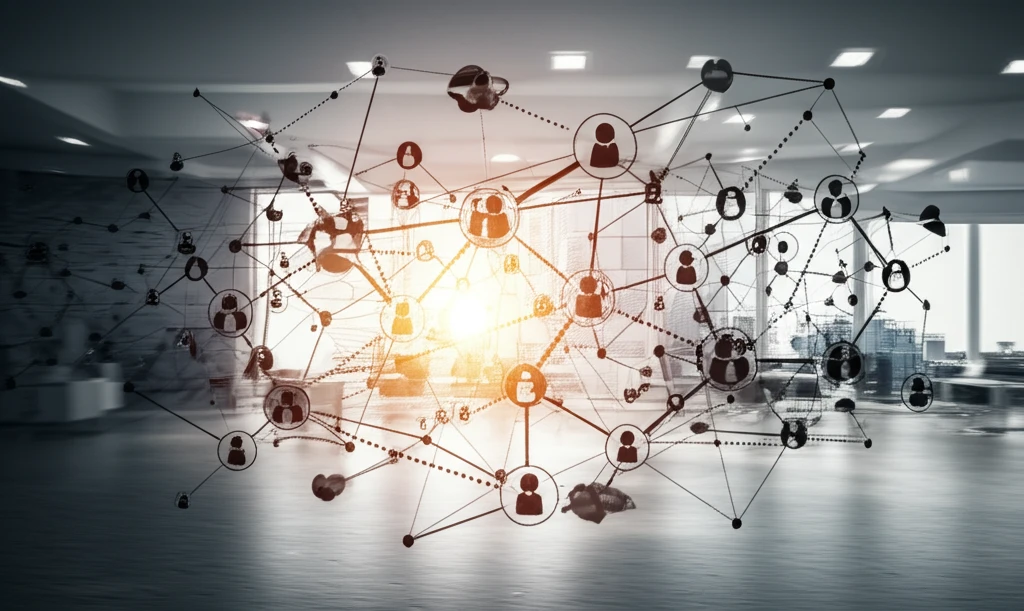
Is Your Office a Productivity Killer? How to Unleash Hidden Network Effects
"Unlock your team's potential by understanding the power of social connections and strategic incentive design in the workplace."
In today's interconnected world, it's easy to overlook the profound impact that social networks have on individual and team performance. Whether it's the layout of your office, the strength of your corporate culture, or the design of your incentive programs, these factors can either amplify or diminish your team's collective output. The concept of network effects suggests that one person's actions can ripple through the group, influencing the behavior and productivity of others.
Imagine a bustling office where open communication and collaboration are the norm. In this environment, a motivated employee's enthusiasm can spread like wildfire, inspiring colleagues to elevate their own performance. Conversely, a poorly designed workspace that isolates individuals or a corporate culture that discourages interaction can stifle creativity and innovation, leading to decreased productivity and disengagement. The key lies in understanding how these network effects operate and how to harness them for the benefit of your organization.
Recent research sheds light on the intricate relationship between social networks and individual incentives, offering valuable insights for managers and business leaders. By strategically leveraging network effects, companies can unlock hidden potential, boost productivity, and create a more engaged and collaborative workforce. Let's explore the core principles of moral hazard with network effects, and how to apply them to drive success in your own organization.
What are Network Effects and Why Do They Matter for Productivity?

Network effects describe situations where the value of a product or service increases as more people use it. Social networks operate under a similar principle. In a work environment, these effects manifest as the impact that one employee's actions, attitudes, or efforts have on their colleagues. Positive network effects can lead to increased collaboration, knowledge sharing, and overall productivity. Negative network effects, on the other hand, can result in decreased morale, communication breakdowns, and reduced output. It’s crucial to understand how these effects are shaping your workplace dynamics.
- Encourage Collaboration: Create opportunities for employees to work together on projects, share ideas, and learn from each other.
- Promote Open Communication: Foster a culture where employees feel comfortable sharing their thoughts, concerns, and feedback.
- Design Collaborative Workspaces: Implement office layouts that encourage interaction and spontaneous communication.
- Lead by Example: Demonstrate the behaviors and attitudes you want to see in your team.
- Recognize and Reward Teamwork: Highlight and celebrate collaborative successes to reinforce the value of teamwork.
Turning Insights into Actionable Strategies
By understanding and strategically leveraging network effects, companies can unlock hidden potential, boost productivity, and cultivate a more engaged and collaborative workforce. It all begins with recognizing the profound impact that social connections have on individual and team performance. Whether it's optimizing your office environment, refining your corporate culture, or designing incentive programs that foster collaboration, every decision counts.
